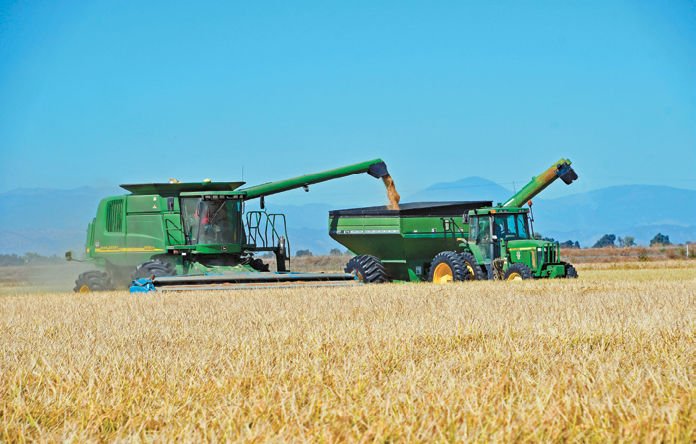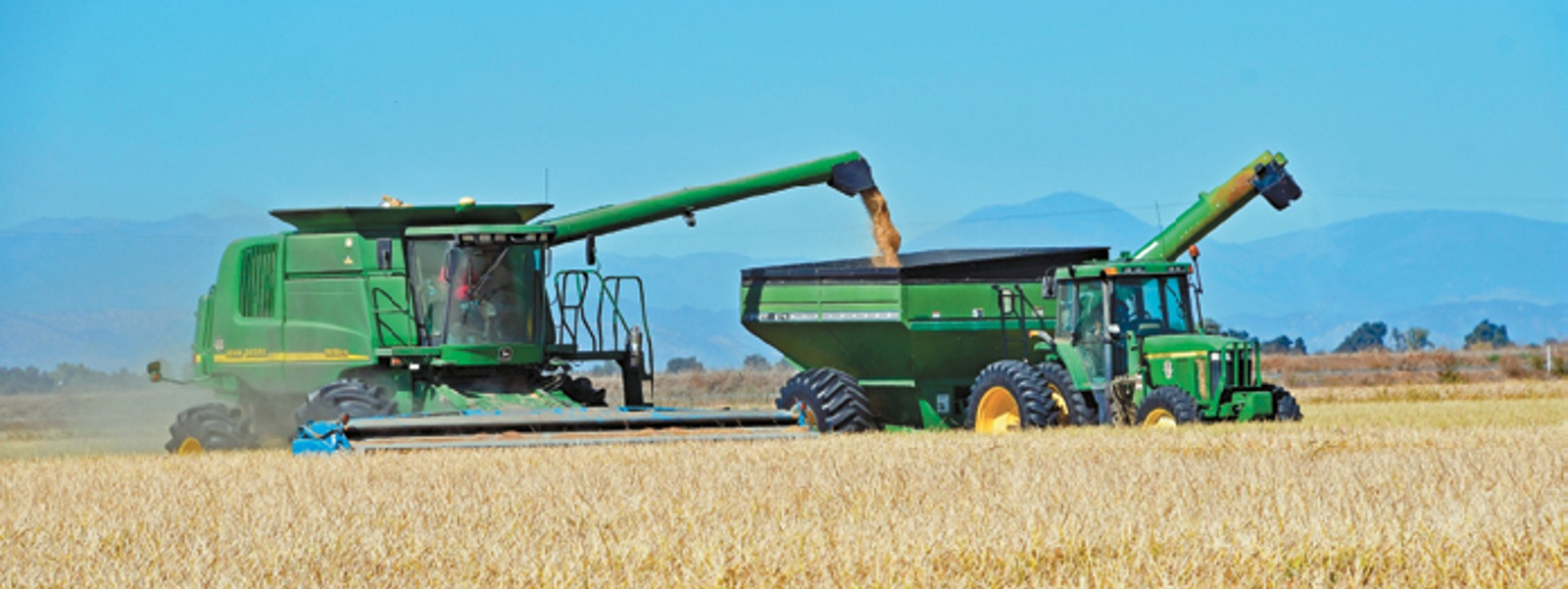Later rice harvest deals minor yield, quality impacts

A combine cuts a field of Calrose rice near Arbuckle. Rice harvest statewide averaged about 10 days later than normal. Growers had more ground to cover, with acreage nearly double from 2022.
Photo/Vicky Boyd

_fmt.jpg)
Photo/Vicky Boyd
By Vicky Boyd
Winter and spring rains brought welcome drought relief in 2023, but they caused rice growers to get a late start planting, and the delay rippled through harvest.
“It was a late-planted year, with only about half of the crop planted by May 18,” said Bruce Linquist, University of California Cooperative Extension rice specialist. “That’s about a week late. Rains delayed planting, and it had effects on yields going forward. Harvest was about 10 days later than usual.”
Add relatively cool weather in late summer and early fall, and many rice producers said their grain moisture levels appeared stuck or were slow to drop to the desirable 18% to 20% harvest levels.
During an average year, the season from planting to harvest spans 145 to 150 days. In 2023, Linquist said, it was 152 days.
“We had late planting and late harvest,” he said. “We had more M-211, and that’s a late-season variety. We had a lot of rains during harvest—not much each time but enough. Later rains stopped harvest for a day or two, and cool temperatures and little north wind meant it took longer to get the crop out.”
The U.S. Department of Agriculture Farm Service Agency reported the state’s growers planted about 501,200 acres of rice in 2023. That’s nearly double the acres planted in 2022 when drought reduced surface water deliveries to nearly zero mostly on the Sacramento Valley’s west side.
About half the 2023 rice crop was planted on ground that had been fallowed in 2022 because of lack of water. Normally, Linquist said, growers experience higher yields after fallowing. But that didn’t appear to be the case this season.
Based on anecdotal information, Linquist estimated the 2023 statewide average yield was about 86 hundredweights per acre, down slightly from 87.6 cwt. per acre in 2022.
For the season after fallowing, Linquist said UC recommends reducing nitrogen fertilizer. Although many growers followed those guidelines, he said rice fertility needs may need to be revisited, particularly how it affects standability. When rice plants fall, or lodge, harvest becomes slower and more difficult and grain may be lost, reducing overall yield.
Mike Dewitt, who farms near Robbins, described the 2023 season as “nothing spectacular.” There were no unusual heat spells, no abnormal pest outbreaks, and his yields were about average.
Dewitt said he had circled Oct. 2 on his calendar as his historic harvest start date. But he didn’t actually start cutting until Oct. 13, and he finished Nov. 8.
“When you start pushing past Halloween, you start getting nervous,” he said about the increased potential for storms.
The region received some rain Oct. 22 that stopped harvest for a few days, but Dewitt said it didn’t have a major impact.
As he cut his later-planted fields, he said he was concerned about milling quality, or the percent of whole kernels that net growers higher payment. Milling quality often decreases as rice is left in the field longer than normal and grains are exposed to the elements.
While his overall per-acre yields were down about 5% in his later-planted fields, Dewitt said his quality did not drop. He had the short-season Calrose variety M-105 and the most commonly planted Calrose variety, M-206.
Drew Rudd, who farms with his family near Gridley, said he experienced a similar season with spring rains delaying ground preparation. He ended up eliminating steps and made one pass with a tri-plane leveler “because it was such a short window. It worked out OK.”
In 2022, drought-induced water cutbacks meant the Rudds planted only about 65% of their acreage. With full water deliveries in 2023, they planted all their ground to M-105, M-206 and a bit of the late-maturing M-209 between May 15-29.
As with many other growers, the predominately mild growing conditions during the summer pushed the Rudds’ harvest into late October.
“For the first time in our life, we were considering applying salt,” Rudd said about using sodium chlorate to speed drying. “We didn’t have to because we received a freeze about the 26nd of October, followed by two days of north winds, and our rice literally dropped seven to eight points of moisture. So far, the quality looks good. Our yields are off five sacks on average.”
Charley Mathews, who farms near Marysville, also planted late and didn’t finish harvest until Nov. 7.
“I didn’t think it was ever going to end,” he said. “Wet conditions delayed maturity. We had equipment failures, and it was very challenging. Once you start late, you’re kind of stuck in that cycle.”
Mathews had M-206 and M-401, a long-season premium medium-grain variety. Although his overall yields were down 2% to 5%, he said he was surprised by the good milling quality.
“We got very lucky,” Mathews said, considering some of the rice was harvested above optimum moisture levels.
The improved quality also was a pleasant change from 2022, when an early September heat wave caused widespread chalk, considered a quality defect that results in dockage.
Mathews said he is involved with two rice dryers that were still running in early December to handle high-moisture rice.
(Vicky Boyd is a reporter in Modesto. She may be contacted at vlboyd@att.net.)




